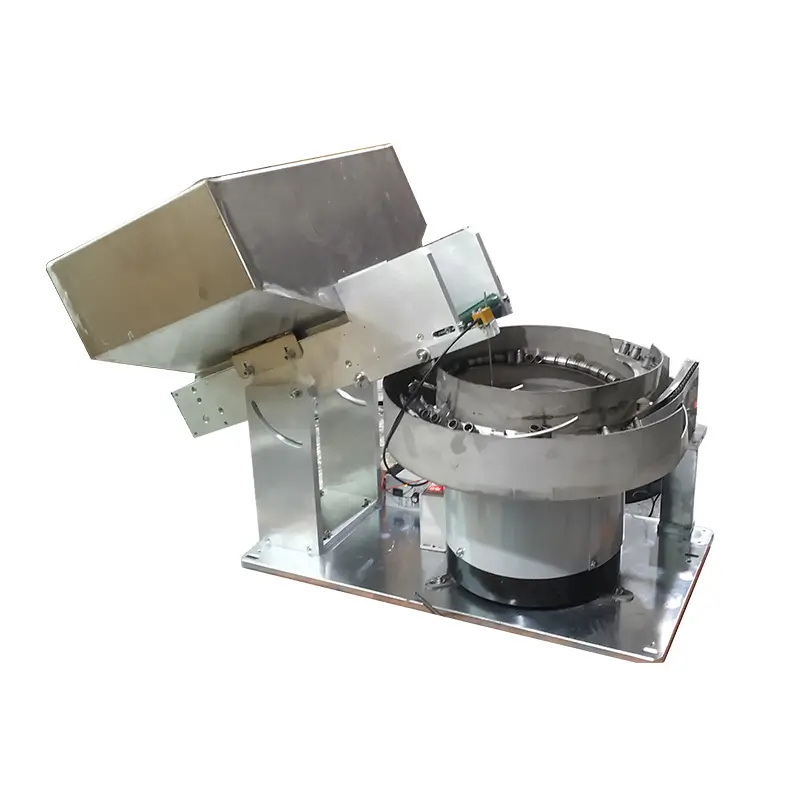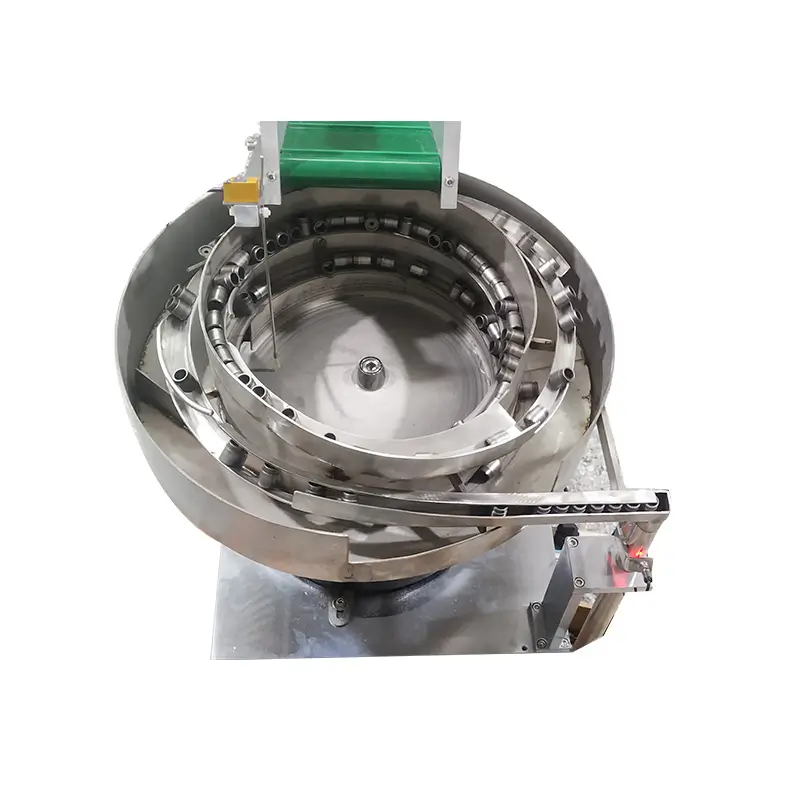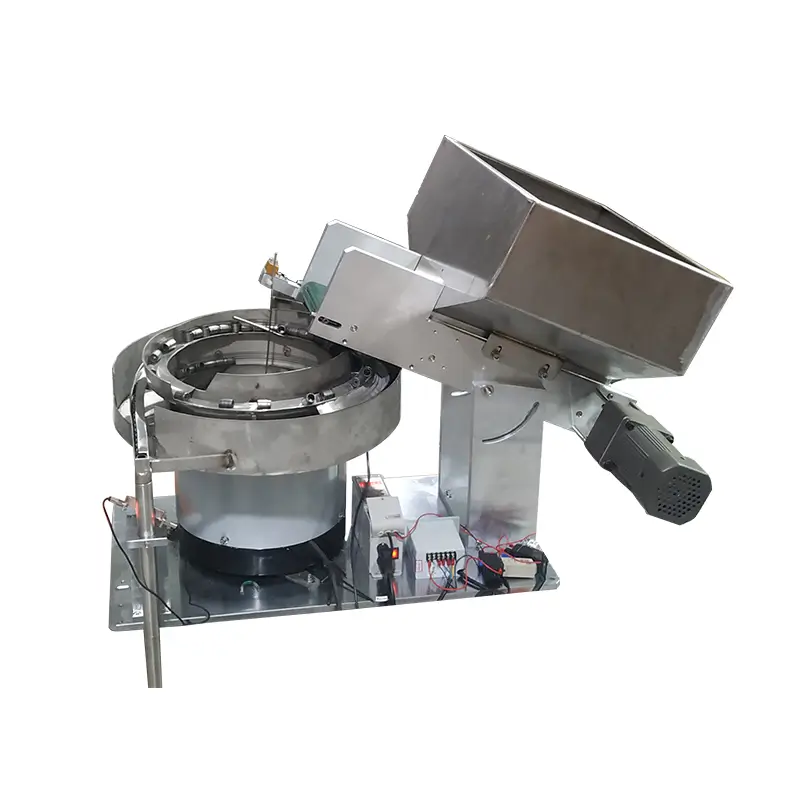Bài viết này sẽ giúp bạn hiểu rõ về cơ cấu cấp phôi – một yếu tố quan trọng trong hệ thống tự động hóa. Chúng tôi sẽ giải thích nguyên lý hoạt động, phân tích lợi ích, giới thiệu công nghệ tiên tiến và đưa ra các tiêu chí để lựa chọn cơ cấu cấp phôi phù hợp. Hãy cùng SWOER Explore now!
What is the feed mechanism?
Define
Cơ cấu cấp phôi là hệ thống tự động cung cấp chi tiết, linh kiện vào dây chuyền sản xuất. Nó giúp đảm bảo phôi được đưa vào đúng vị trí, đúng hướng và đúng thời điểm để gia công hoặc lắp ráp.
Vai trò quan trọng của cơ cấu cấp phôi
- Ảnh hưởng đến chất lượng sản phẩm: Độ chính xác của phôi quyết định đến chất lượng sản phẩm cuối cùng.
- Tăng tính nhất quán: Cấp phôi tự động giúp đảm bảo sự đồng đều và ổn định trong sản xuất.
- Đáp ứng tiêu chuẩn công nghiệp: Hệ thống cấp phôi chất lượng giúp doanh nghiệp tuân thủ các quy chuẩn và nâng cao năng lực cạnh tranh.

Classify
Based on the method of operation, the feed mechanism is divided into the following main types:
- Vibrating funnel: Use vibration to move and classify the workpiece in a spiral path, suitable for small parts that require high precision.
- Conveyor: Use conveyors (rollers, belts, or vibrators) to transport workpieces in straight or curved lines, often used for large, heavy parts.
- Robot: Use the robot arm to pick up and place the workpiece in the desired position, flexible, precise, suitable for complex details.
Working principle
- Vibrating funnel: Generate vibration to move the workpiece upward in a spiral, combined with traps to remove misaligned workpieces.
- Conveyor: Use motor to pull conveyor, transport workpiece from one location to another.
- Robot: The robot arm is controlled by the program to perform the movements of picking and placing the workpiece.
Benefits of modern technology in feed mechanism
The development of technology has brought about great advances in the feed mechanism, helping to optimize the production process and bring many practical benefits to businesses.
Improve productivity
- Hoạt động tốc độ cao, cấp liệu liên tục, không gián đoạn.
- Giảm thời gian chết của máy móc, tăng sản lượng đáng kể.
Improve accuracy
- Cảm biến, AI, thị giác máy giúp định vị phôi chính xác.
- Hệ thống kiểm tra tự động loại bỏ phôi lỗi, đảm bảo chất lượng.
Cost savings
- Giảm nhân công, tối ưu hóa chi phí lao động.
- Cấp liệu chính xác, giảm phế phẩm và lãng phí nguyên vật liệu.
- Ứng dụng công nghệ tiết kiệm năng lượng, giảm chi phí vận hành.
Enhanced flexibility
- Dễ dàng điều chỉnh để phù hợp với nhiều loại phôi.
- Hệ thống điều khiển thông minh giúp thay đổi thông số nhanh chóng.
Increased safety
- Hạn chế tiếp xúc của con người với máy móc, giảm nguy cơ tai nạn.
- Giảm tiếng ồn, bụi bẩn, tạo môi trường làm việc an toàn, thoải mái hơn.

Modern technological solutions in the feed structure
Technology plays a key role in improving the efficiency and accuracy of the feed mechanism.
Sensor
Sensors act as the “senses” of the workpiece feeding mechanism, helping to detect and position the workpiece accurately. There are common types of sensors such as:
- Optical sensor: Embryo detection based on light intensity changes.
- Proximity sensor: Embryo detection based on magnetic field changes.
- Laser sensor: Use laser to measure distance and locate workpiece.
- Ultrasonic sensor: Use ultrasound to detect embryos.
Control system
Precisely control the movement of components in the feed mechanism (vibrating hopper, conveyor, robot, etc.). The control system consists of the following components:
- PLC (Programmable Logic Controller): The “brain” of the system, performs control algorithms based on signals from sensors.
- HMI (Human Machine Interface): Allows the operator to monitor and control the system.
- Servo motor: High precision motor, controlled by PLC to perform precise movements.
Artificial Intelligence (AI)
AI applications make the feed mechanism “smarter”, capable of self-learning and adapting to different situations.
- Embryo identification: Classify embryos by shape, size, color, etc.
- Embryo Classification: Eliminate defective and substandard embryos.
- Workpiece orientation: Determine the orientation of the blanks and arrange them in the correct position.
- Optimize operations: AI can analyze data and automatically adjust parameters to optimize the performance of the feed mechanism.
Robot
Robots are used to pick and place workpieces with high precision and speed. Common types of robots:
- Collaborative Robots (Cobots): Works with people, suitable for applications that require flexibility and safety.
- Industrial Robots: Often used in applications requiring high speed and power.

Key factors to achieve quality feed structure
Để có một cơ cấu cấp phôi hoạt động hiệu quả, ổn định và bền bỉ, đáp ứng yêu cầu sản xuất khắt khe. Cần chú trọng đến nhiều yếu tố quan trọng trong quá trình thiết kế, chế tạo và vận hành.
Design
- Phân tích đặc điểm phôi và yêu cầu sản xuất để chọn cơ cấu phù hợp.
- Tối ưu hóa thiết kế đường dẫn, bẫy, kẹp để phôi di chuyển trơn tru, không kẹt.
Material
- Sử dụng vật liệu bền, chống mài mòn như thép không gỉ, nhôm, nhựa kỹ thuật.
- Lựa chọn vật liệu phù hợp với môi trường làm việc để tăng tuổi thọ.
Processing
- Đảm bảo độ chính xác cao, kích thước và độ bóng bề mặt đạt tiêu chuẩn.
- Đảm bảo tính đồng đều, đặc biệt với các chi tiết quan trọng như đường xoắn ốc, bẫy.
Assemble
- Thực hiện lắp ráp chính xác, chắc chắn, tránh sai lệch hoặc lỏng lẻo.
- Kiểm tra kỹ thuật để đảm bảo cơ cấu hoạt động ổn định, không có rung động bất thường.
Kiểm tra & chạy thử
- Chạy thử với phôi thực tế để đánh giá hiệu quả, độ chính xác, tốc độ cấp liệu.
- Hiệu chỉnh các thông số, điều chỉnh khi cần thiết để đạt hiệu suất tối ưu.

Key factors to achieve quality feed structure
Conclude
Automatic feeders play a key role in improving productivity, quality and efficiency of modern manufacturing. Applying advanced technology to feeders brings outstanding benefits, helping businesses optimize processes, save costs and increase competitiveness in the market. SWOER We are proud to be a unit providing advanced and diverse billet feeding solutions, meeting all business needs. Contact us now for advice and the best quote!
Contact us
Please let us know your material size and required speed.
